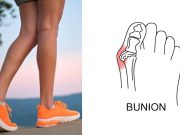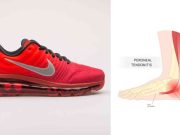The importance of choosing the right type of shoe for a suitable activity cannot be overstated. Footwear is essential to any physical activity and can significantly impact performance, comfort, and safety. Running and walking are two of the most popular physical activities, and each requires a specific type of shoe to support the feet, legs, and overall body. In this article, we will delve into the What is the difference between running and walking shoes and why it is essential to choose the right type of shoe for each activity.
Table of Contents
Difference between running and walking shoes:
Running Shoe Running shoes are specifically designed to provide support, cushioning, and stability for runners. Running is a high-impact activity that can cause stress and strain the feet, knees, and legs. The repetitive impact of Running can cause injuries if not properly supported. Running shoes are designed to handle this impact and reduce the stress and strain on the joints.
Features of Running Shoes
Cushioning: Running shoes have more cushioning in the heel and forefoot areas to absorb the shock of impact and reduce stress and strain on the joints.
Support: Running shoes have a firmer midsole that provides stability and support for the feet, knees, and legs. The shoes are also designed with the right level of arch support to prevent overpronation or supination.
Stability: Running shoes have a stable midsole that helps control the foot’s motion and prevent injuries. They also have a sturdy outsole that provides traction and prevents slips and falls.
Advantages of Using Running Shoes for Running:
Reduces stress and strain on joints – The extra cushioning and support in running shoes reduce the stress and anxiety on the feet, knees, and legs, reducing the risk of injury.
Prevents injury – Running shoes are designed with stability and support in mind to control overpronation, supination, and other types of foot, knee, and leg injuries.
Improves running performance – Running shoes provide the proper support and cushioning to improve Running performance, making it easier and more enjoyable.
Features of Walking Shoes:
Walking Shoes Walking shoes are designed to be comfortable and lightweight, making them ideal for people who regularly walk for exercise or as part of their daily routine. They have less cushioning than running shoes, as the impact of walking is less intense. Walking shoes are designed to provide comfort, support, and stability for the feet and legs during long walks.
- Lighter – Walking shoes are more lightweight than running shoes, making them suitable for long walks or daily use.
- Less cushioning – Walking shoes have less cushioning than running shoes, as the impact of walking is less intense.
Advantages of Using Walking Shoes for Walking:
Provides comfort – Walking shoes are designed to be comfortable and lightweight, making them ideal for long walks or daily use
Improves posture – Walking shoes are designed with the proper arch support and cushioning, which can improve posture and reduce the risk of foot, knee, and leg injuries.
Prevents foot fatigue – The lightweight and comfortable design of walking shoes helps prevent foot fatigue, making walking easier for extended periods.
Choosing the Right Shoe Choosing the correct type of shoe for running or walking is crucial for performance, comfort, and safety. Several factors to consider when selecting a shoe include foot shape and size, arch support, activity level, and terrain type.
Factors to Consider When Choosing a Shoe:
- Foot shape and size – The shape and size of your feet can impact the type of shoe suitable for you. A proper fitting is essential to ensure that the shoe fits well and provides the appropriate support and cushioning.
- Arch support – Arch support is essential for people with high arches or flat feet, as it helps to prevent overpronation or supination.
- Activity level – The activity level, such as running or walking, will determine the suitable shoe type. Running shoes have more cushioning and support compared to walking shoes, which are designed to be lightweight and comfortable.
- Type of terrain – The kind of terrain you plan to run or walk on will also impact the type of shoe you should choose. Trail running shoes are designed for off-road terrain, while road running shoes are designed for road running.
Importance of Getting a Proper Fitting Getting a proper fitting is essential when choosing a shoe for running or walking. A good fitting ensures that the shoe fits well and provides the appropriate support and cushioning. Getting a fitting at a specialized running or walking store is recommended, where a professional can help you find the right shoe for your feet.
Read More: Best Walking Shoes For Overweight Women
Conclusion
In conclusion, running and walking shoes are specifically designed for their respective activities. Running shoes provide support, cushioning, and stability for runners while walking shoes are designed to be lightweight and comfortable for walkers.
Choosing the correct type of shoe for a suitable activity is essential for performance, comfort, and safety. When selecting a shoe, it is necessary to consider factors such as foot shape and size, arch support, activity level, and terrain type. A proper fitting is also essential to ensure that the shoe fits well and provides the appropriate support and cushioning. Taking the time to choose the right type of shoe for running or walking can significantly impact the overall experience and reduce the risk of injury.
































